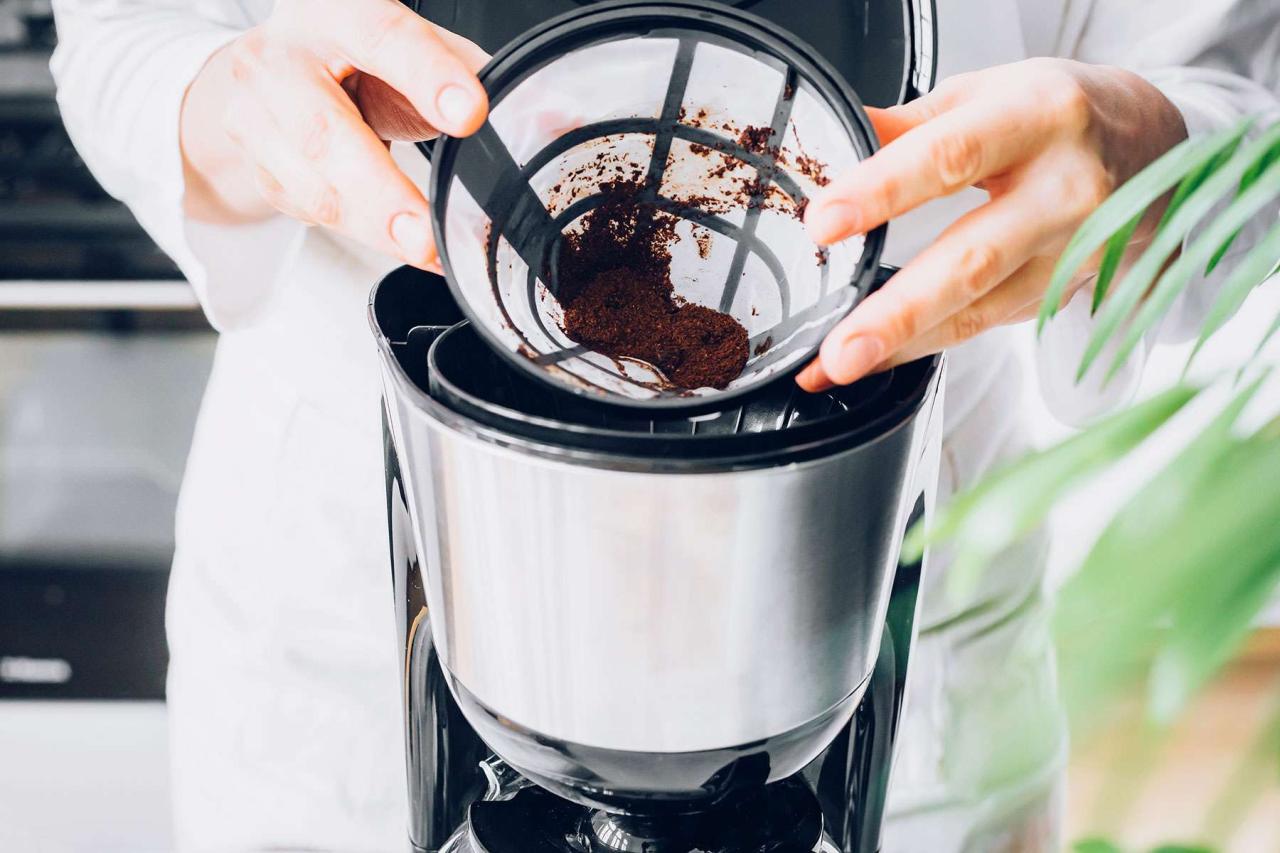Coffee is a beloved beverage for many, but the coffee maker that brews this delightful drink often goes unnoticed in terms of maintenance. Over time, coffee residue and mineral deposits can build up, affecting the flavor and efficiency of your coffee maker. Regular cleaning with vinegar can ensure a fresh tasting cup of coffee and prolong the life of your machine. In this comprehensive guide, we will explore the best way to clean a coffee pot with vinegar, including step-by-step instructions, practical tips, and common mistakes to avoid.

Why Clean Your Coffee Maker with Vinegar?
The Importance of Regular Maintenance
A coffee maker is more than just a kitchen appliance; it’s a vital part of many people’s daily routine. Regular maintenance is essential to keep it performing at its best. Here’s why:
- Bitter Taste: Coffee makers that are not cleaned regularly can develop a buildup of coffee residue. This lingering residue can make your coffee increasingly bitter. Over time, the flavor of your favorite brew can be significantly altered, leading to a less enjoyable experience.
- Clogging: Mineral deposits, often referred to as scale, can accumulate in various parts of the coffee maker. These deposits can clog the components, impairing the drip operation. This not only slows down the brewing process but can also lead to machine malfunctions.
- Health Concerns: The moist environment of leftover coffee grounds is a breeding ground for yeast, mold, and bacteria. If not cleaned properly, these microorganisms can multiply, posing potential health risks.
The Role of Vinegar
Vinegar is not just a kitchen staple; it’s a versatile household item that can be used for various cleaning purposes. When it comes to cleaning a coffee maker, vinegar acts as a natural descaler and cleaner. Here’s how:
- Removing Mineral Deposits: Vinegar’s acidic nature helps in dissolving the mineral buildup or scale. This is particularly important in areas with hard water, where mineral deposits can quickly accumulate. Regular descaling ensures that the drip operation remains efficient and that the internal components are free from blockages.
- Eliminating Coffee Residue: Coffee residue can stick to the carafe, filter basket, and other parts of the coffee maker. Vinegar helps in breaking down this residue, ensuring that every cup of coffee tastes fresh and free from any lingering flavors of previous brews.
- Disinfecting: Beyond cleaning, vinegar also acts as a natural disinfectant. Its acidic nature helps in killing bacteria, mold, and other germs that might be lurking in the hidden corners of the coffee maker. This ensures that your coffee maker is not just clean but also hygienic.
Cleaning your coffee maker with vinegar is not just about maintaining the appliance; it’s about enhancing your daily coffee experience. From preserving the perfect taste to ensuring the machine’s longevity and your health, regular cleaning with vinegar is a simple yet effective practice that every coffee lover should adopt. By understanding the importance of regular maintenance and the role of vinegar, you can make this essential task a seamless part of your routine, ensuring that every cup of coffee is a perfect one.
How to Clean a Coffee Pot with Vinegar: A Step-by-Step Guide
1. Prepare the Coffee Maker
Remove and Clean the Parts
- Empty the Coffee Maker: Start by turning off and unplugging the coffee maker. Remove any leftover coffee from the carafe.
- Clean the Carafe, Brew Basket, and Filters: Wash these parts with hot soapy water. Use a soft brush or sponge to remove any coffee stains or residue.
- Inspect for Damage: Check for any cracks or damage that might affect the cleaning process.
Check the Manufacturer’s Instructions
- Refer to the Manual: Some brands caution against the use of vinegar, especially if the coffee maker has metal parts. Always refer to the manual to ensure that vinegar is suitable for your specific model.
2. Mix Vinegar and Water
Create the Mixture
- Measure the Ingredients: Mix equal parts white vinegar and water. The amount depends on the capacity of your water reservoir. A typical ratio might be 1:1.
- Consider the Strength: If your coffee maker has significant buildup, you might consider a stronger vinegar solution.
Fill the Reservoir
- Pour the Mixture: Add the vinegar-water mixture to the reservoir, ensuring that it reaches the indicated fill line.
- Use a Filter if Needed: If your coffee maker uses paper filters, place one in the brew basket.
3. Run the Cleaning Cycle
Start the Drip Cycle
- Begin Brewing: Run the coffee maker through half of a drip cycle.
- Pause the Cycle: Stop the cycle midway to allow the vinegar-water mixture to sit.
Let it Sit
- Allow Soaking Time: Let the mixture sit for 30 minutes to an hour in both the reservoir and the carafe. This soaking time helps dissolve mineral deposits and coffee residue.
Resume the Cycle
- Complete the Brewing: Finish running the vinegar-water mixture through your coffee maker.
4. Rinse Thoroughly
Run Water Cycles
- Use Plain Water: Fill the reservoir with plain water and run it through the system for a full brew cycle.
- Repeat if Necessary: Repeat this process at least once to ensure that all vinegar traces are removed.
Clean the Removable Parts
- Wash Thoroughly: Wash the filter basket, permanent filter, and carafe with hot, soapy water again to ensure complete cleanliness.
5. Regular Maintenance Tips
Daily Cleaning
- After Every Use: Remove the grounds and clean the brew basket, lid, and carafe after every use to prevent residue buildup.
Deep Cleaning
- Frequency: A deeper cleaning with vinegar should be done at least every three months or monthly if you have hard water.
- Monitor Performance: Keep an eye on the taste and brewing time of your coffee. If you notice changes, it might be time for a cleaning.
Cleaning a coffee pot with vinegar is a straightforward process that can make a significant difference in the taste and performance of your coffee maker. By following these detailed steps and maintaining regular cleaning habits, you can ensure that your coffee maker continues to provide delicious coffee for years to come. Regular maintenance with vinegar not only keeps your machine in optimal condition but also contributes to a more enjoyable coffee experience.
Common Mistakes to Avoid and Best Practices to Follow
Ignoring Regular Cleaning
- The Mistake: Many people overlook the importance of regular maintenance for their coffee maker. They may clean it sporadically or only when noticeable problems arise.
- The Consequence: Ignoring regular cleaning can lead to a buildup of coffee residue and mineral deposits, affecting both the taste and efficiency of the machine.
- Best Practice: Establish a routine for daily cleaning of removable parts and regular deep cleaning with vinegar. This ensures optimal performance and taste.
Using Vinegar on Unsuitable Models
- The Mistake: Not all coffee makers are suitable for cleaning with vinegar. Some models, especially those with metal parts, may be damaged by acidic cleaning agents.
- The Consequence: Using vinegar on unsuitable models can lead to corrosion or other damages, potentially shortening the lifespan of the machine.
- Best Practice: Always check the manufacturer’s guidelines before using vinegar. If vinegar is not recommended, follow the manufacturer’s suggested cleaning methods.
Leaving Wet Grounds
- The Mistake: Leaving wet, used grounds in the coffee maker for any length of time is a common oversight.
- The Consequence: Wet grounds can create a moist environment that encourages the growth of mold and bacteria. This not only poses health risks but can also affect the flavor of your coffee.
- Best Practice: Always remove and discard used grounds immediately after brewing. Clean the brew basket and other parts that come into contact with the grounds to prevent any microbial growth.
Ignoring Signs of Buildup
- The Mistake: Some users may ignore or fail to recognize the signs of buildup in their coffee maker, such as a change in taste or extended brewing time.
- The Consequence: Ignoring these signs can lead to worsening performance and potential damage to the machine. The taste of the coffee may become increasingly off, leading to a less enjoyable experience.
- Best Practice: Be attentive to the signs of buildup, including any changes in the taste, appearance, or brewing time of your coffee. If you notice any of these signs, it may be time for a cleaning.
Cleaning a coffee pot with vinegar is a simple and effective way to maintain your coffee maker. However, common mistakes can hinder this process and even lead to potential problems. By understanding and avoiding these mistakes and following best practices, you can ensure that your coffee maker continues to operate efficiently and produce delicious coffee. Regular maintenance, proper use of vinegar, prompt removal of wet grounds, and attentiveness to signs of buildup are key to a satisfying and safe coffee experience. These practices not only preserve the quality of your coffee but also extend the life of your coffee maker, making them essential for every coffee lover.
Conclusion
Cleaning a coffee pot with vinegar is a simple yet effective way to maintain your coffee maker. Regular cleaning not only enhances the flavor of your coffee but also extends the life of your machine. By following the steps and tips outlined in this guide, you can enjoy a perfect cup of coffee every time.





